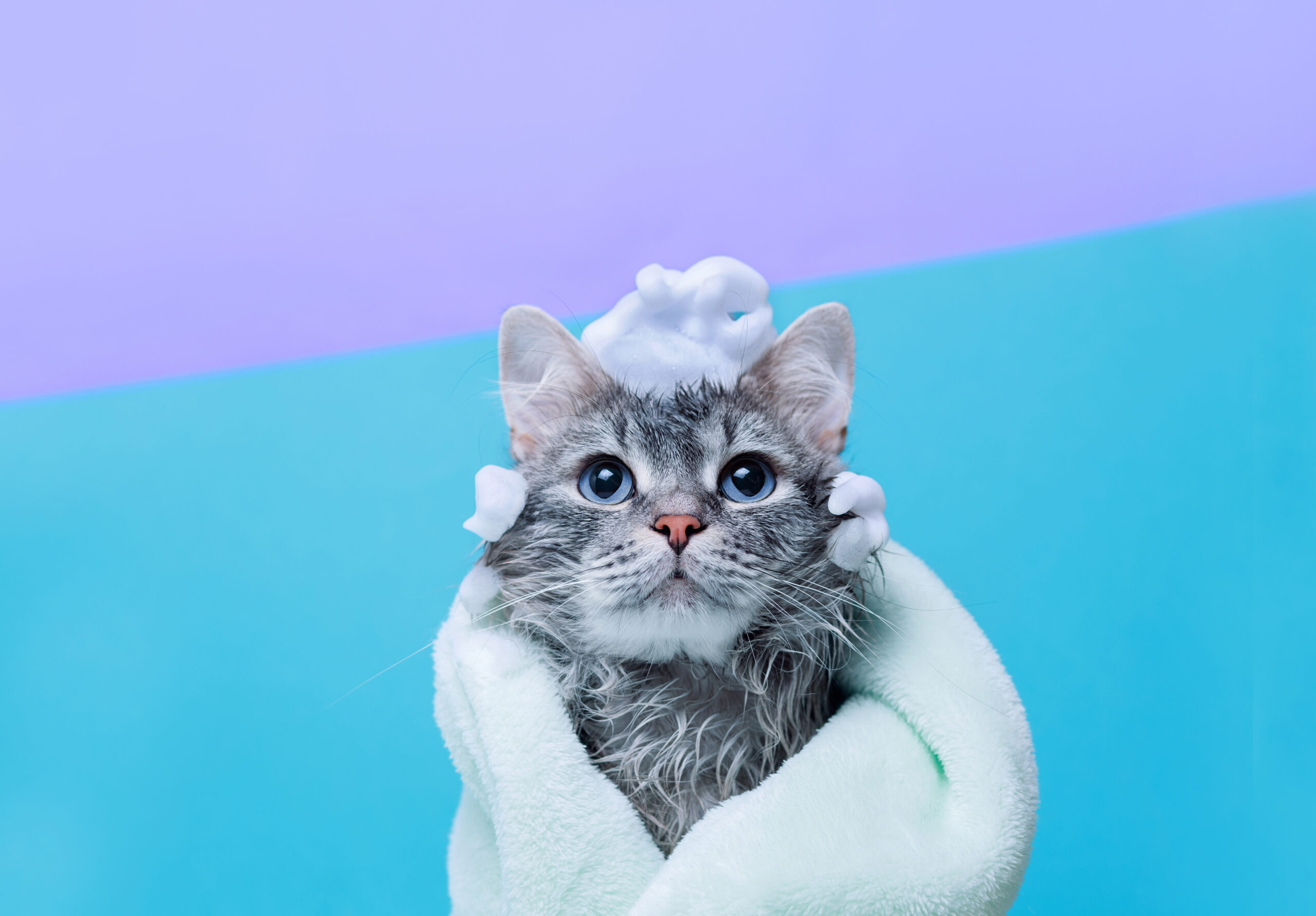Bathing a cat can be a daunting task for many pet owners, often accompanied by the fear of getting scratched or bitten. However, with the right approach and techniques, you can make the experience less stressful for both you and your feline friend.
In this list, we will explore practical tips that can help you bathe your cat without turning it into a dreaded chore. From understanding your cat’s behavior to using the right tools, these strategies aim to make bath time a breeze.
1. Understand Your Cat’s Behavior
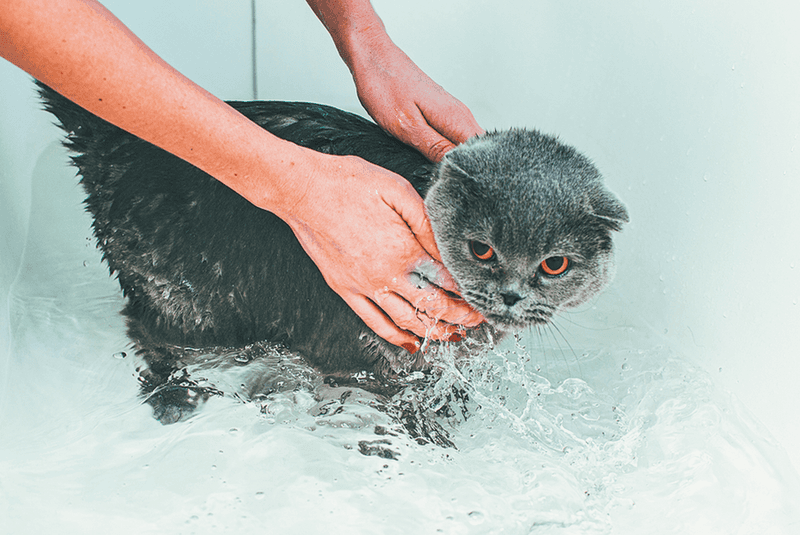
It’s important to realize that cats scratch and bite for all kinds of reasons. That’s why each situation requires a different approach to stop the scratching and biting.
Every cat is unique, with its own personality and preferences, especially when it comes to water. Observing your cat’s behavior before attempting a bath can provide valuable insights. Some cats may be naturally curious about water, while others may show resistance.
Recognizing these signs can help you prepare better. Once you’ve gauged your cat’s comfort level, introduce them to the bath environment gradually. Allow them to explore the bathroom without water first to reduce anxiety.
This familiarity can ease their apprehensions when it’s time for the actual bath. Understanding your cat’s body language can further prevent mishaps. Signs like twitching tails or flattened ears indicate stress, suggesting a need to pause. A gentle approach, respecting their signals, ensures a calmer experience.
2. Gather Supplies In Advance
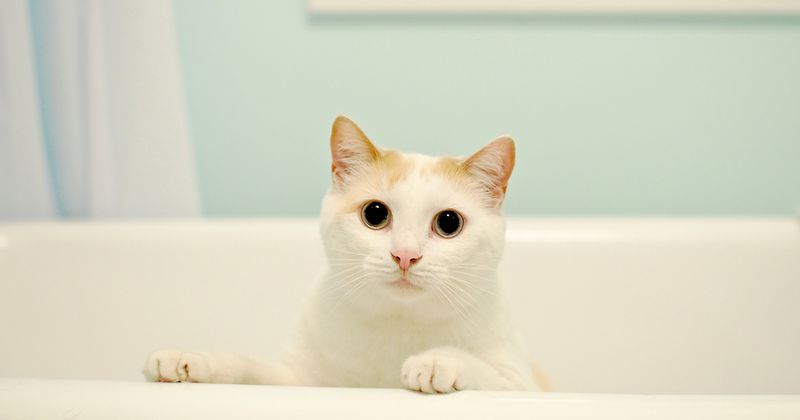
Preparation is key to a successful cat bath. Ensure all supplies are within arm’s reach before you begin. This includes cat-friendly shampoo, a soft towel, and a gentle brush. Having everything ready minimizes disruptions and keeps the process smooth.
Cat-specific shampoos are essential as they cater to feline skin’s unique pH balance, reducing irritation. Choose a product specifically designed for cats, avoiding human shampoos that may harm their skin.
Along with the right products, a soft, dry towel is crucial. Once the bath is over, you’ll need it to wrap your cat immediately to keep them warm and dry. Being well-prepared not only speeds up the process but also reduces the stress experienced by your cat.
3. Create A Calm Environment
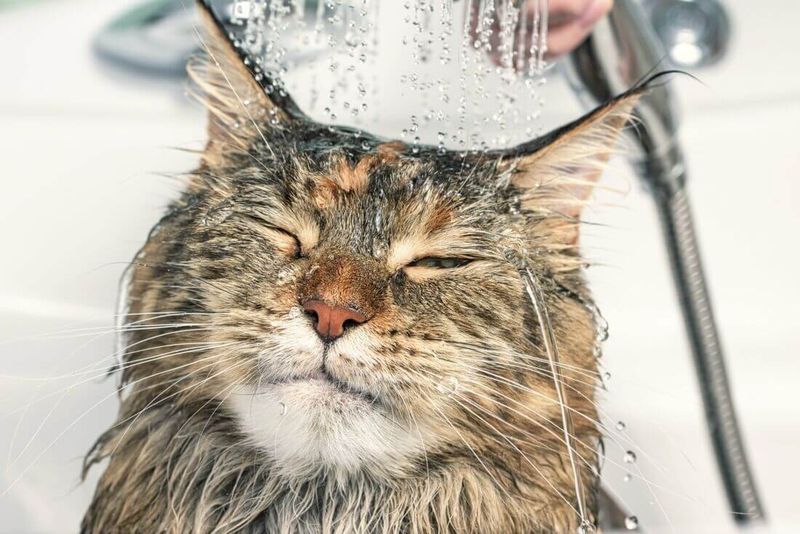
Cats are sensitive creatures, easily affected by their surroundings. Creating a serene environment can significantly influence their bath-time demeanor. Keep the bathroom quiet, with dim lighting to mimic a soothing atmosphere.
Playing soft instrumental music can also help. The gentle sounds have a calming effect, reducing your cat’s anxiety. Consider it as setting the mood for relaxation. In addition, ensure the bathtub or sink has a non-slip mat.
This prevents your cat from slipping, providing stability and confidence. A calm environment lays the foundation for a stress-free bath, making it a more tolerable experience for your feline friend.
4. Use Warm Water
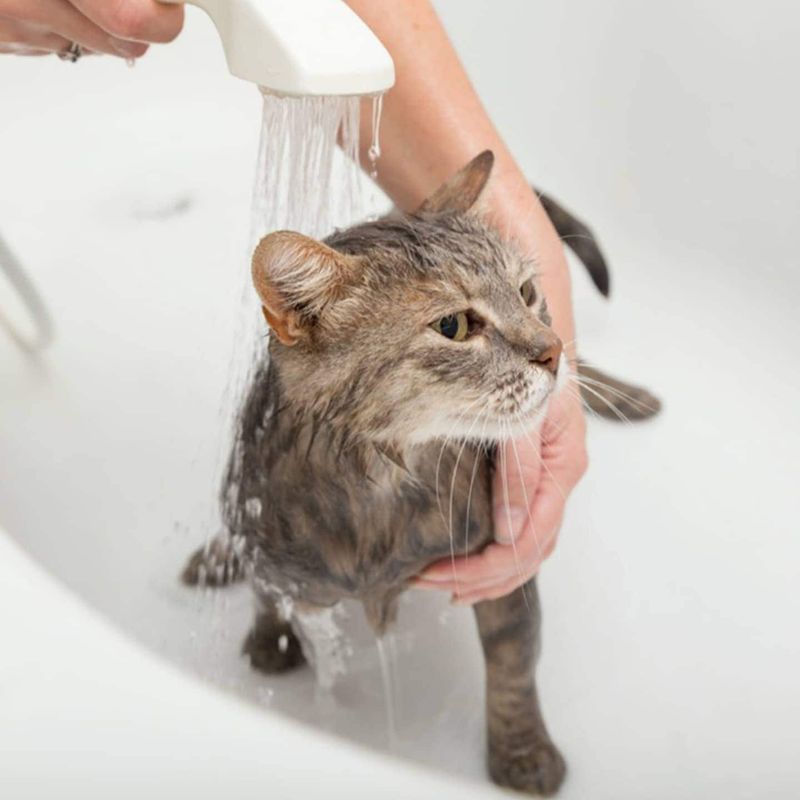
Water temperature plays a crucial role in your cat’s comfort during a bath. Cold water can be a shock to their system, increasing stress levels. Always ensure the water is warm—not too hot or cold—to maintain a comfortable experience for your cat.
Before introducing your cat to the water, test it with your wrist for a gentle warmth. This simple step can prevent discomfort and potential resistance. Aside from comfort, warm water helps to clean your cat’s fur more effectively, loosening dirt and oils without causing harm.
By paying attention to the water temperature, you contribute to a smoother and more successful bathing session.
5. Use Gentle Restraint Techniques
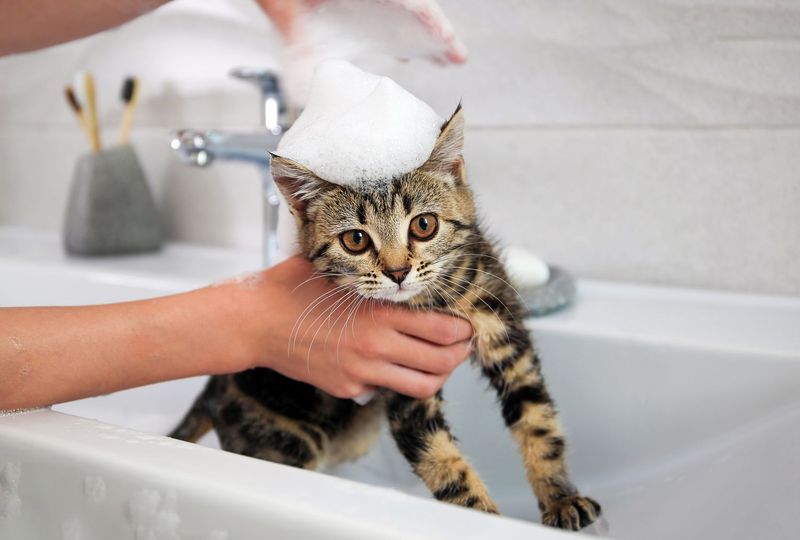
Restraining a cat too firmly can cause panic, while too little restraint may lead to escape attempts. Finding a balance is essential for a successful bath. Use gentle restraint techniques to keep your cat secure while ensuring their comfort.
You can use one hand to support your cat’s chest and the other to gently hold their hindquarters. This method provides stability without causing distress. Always be calm and patient. If your cat struggles, pause and allow them to settle before continuing.
This practice shows respect for your cat’s feelings and helps build trust. Gentle restraint, coupled with patience, is key to avoiding scratches and ensuring a smooth bath time.
6. Focus On Short Sessions
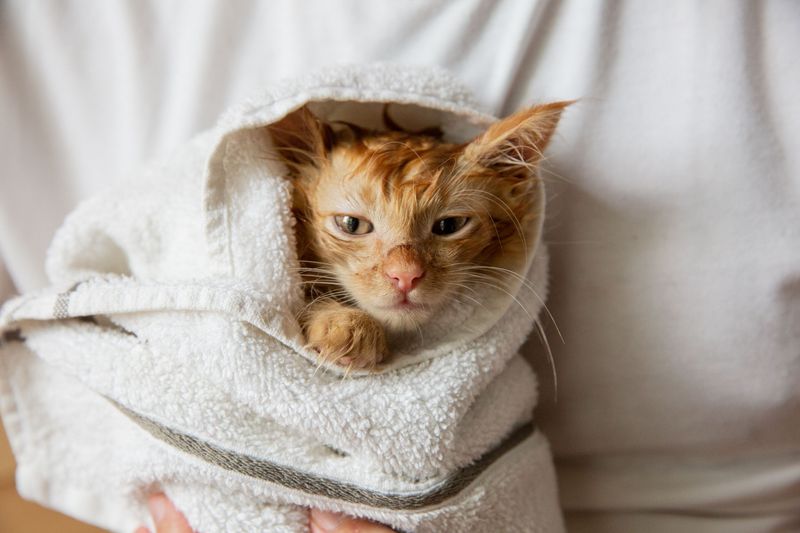
Cats have notoriously short attention spans, which can make prolonged bath times stressful. Keeping the session brief yet efficient is crucial. Aim for a quick but thorough bath to minimize discomfort. Begin by wetting only the necessary areas, avoiding the face and ears.
Soap and rinse promptly, ensuring no shampoo residues are left behind. This approach not only cleans effectively but also keeps your cat from becoming overly anxious. Short sessions prevent your cat from feeling trapped, making the experience less daunting.
7. Reward Your Cat Afterwards
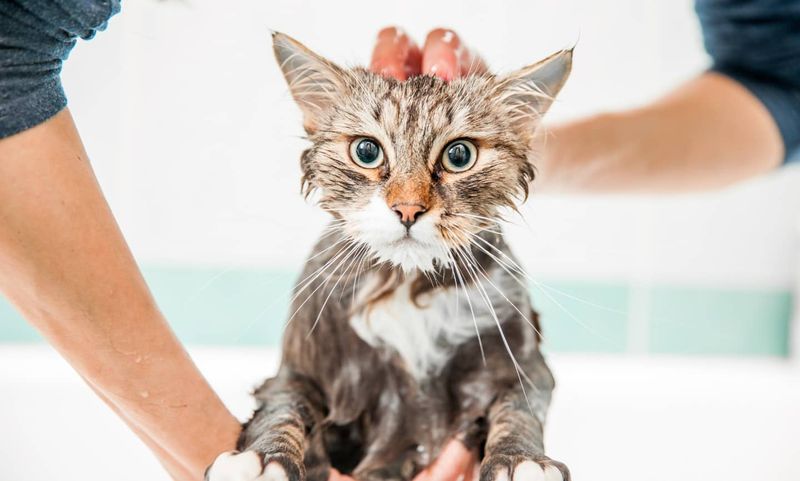
Positive reinforcement can transform bath time from a dreaded event into a tolerable experience for your cat. After the bath, reward them with their favorite treats to associate the process with positive outcomes. In addition to treats, provide plenty of affection and praise.
Gently pat them dry with a soft towel, then cuddle or play with them in a warm space. This routine helps strengthen the bond between you and your pet. Rewards create a positive association, encouraging cooperation in future baths.
By recognizing their bravery and reinforcing good behavior, you make each bath a step towards a calmer, more enjoyable experience for your feline friend.

